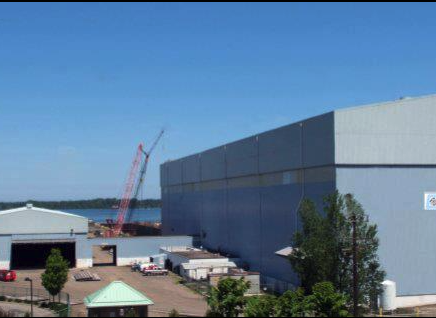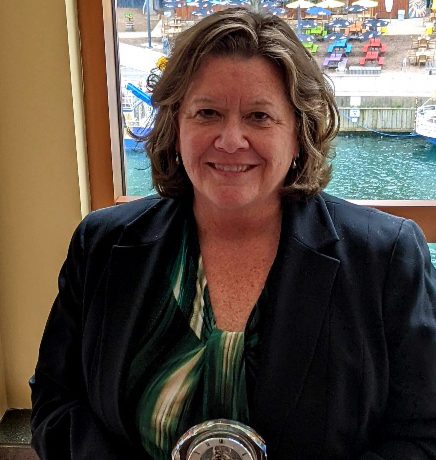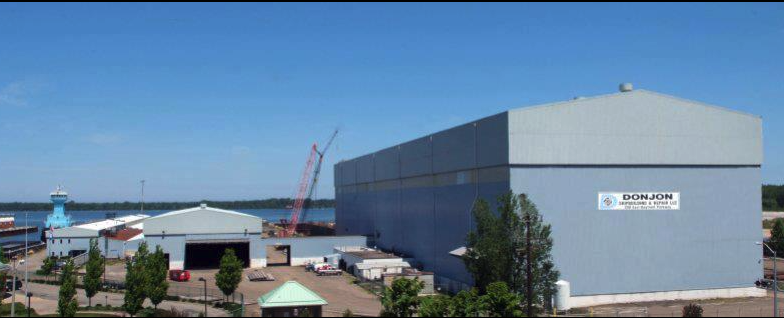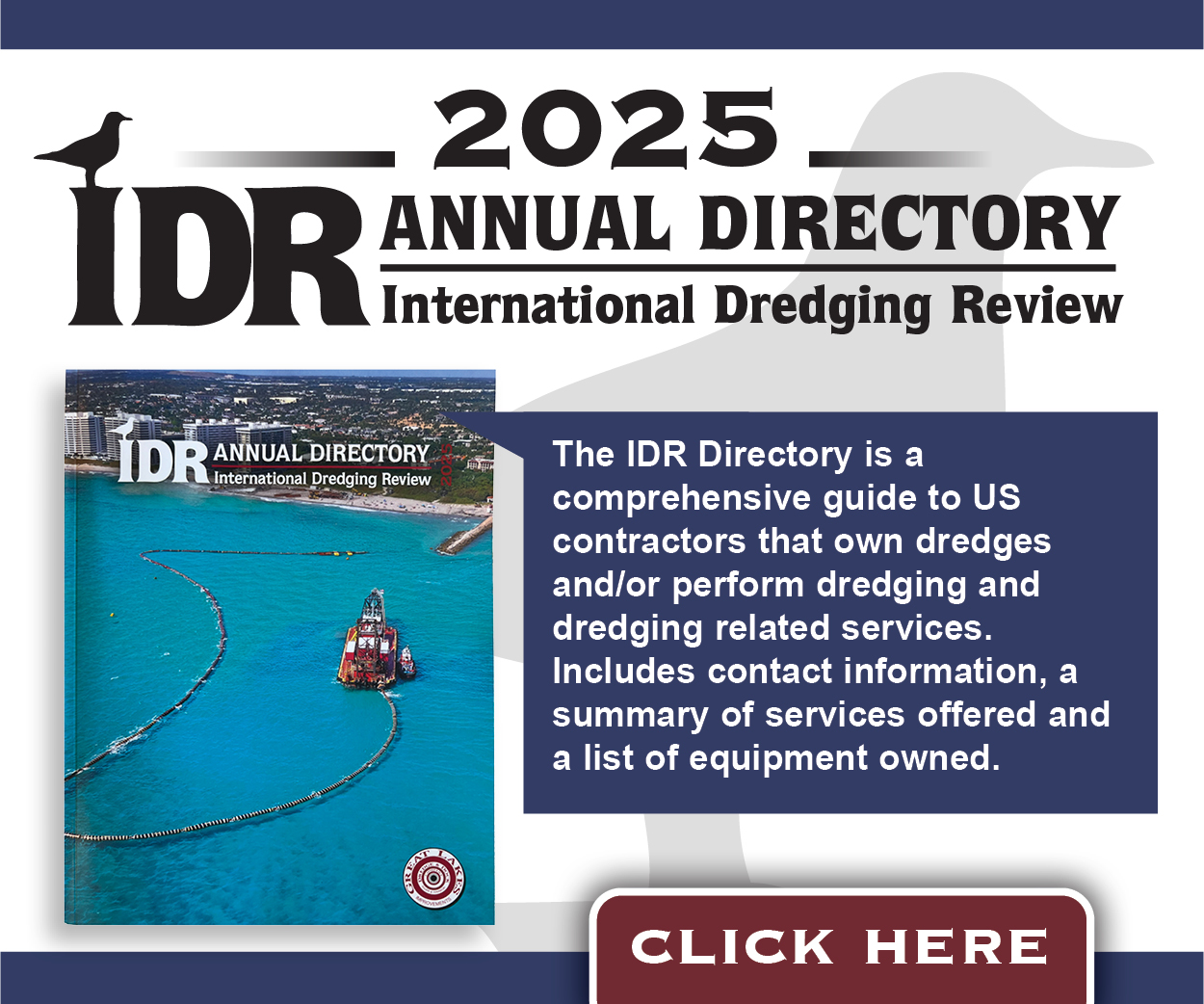Rebuilding American Shipbuilding
U.S. Sens. Todd Young (R-Ind.) and Mark Kelly (D-Ariz.) has re-introduced the Shipbuilding and Harbor Infrastructure for Prosperity and Security (SHIPS) for America Act, a comprehensive bill to revitalize the United States shipbuilding and commercial maritime industries. Some of its provisions had earlier been included in an Executive Order issued by President Trump on April 7.
Supporters of the efforts to incentivize and revitalize U.S. shipbuilding and the commercial maritime fleet point to decades of neglect as the United States surrendered a once-dominant position among blue-water maritime commercial fleets. In recent years, China has targeted the shipyard sector as part of its long-term “Made in China” plan. From building 5% of the world’s commercial ships in 1999, China has risen to build approximately 62% of all new commercial ships globally in 2025, solidifying its position as the world’s leading shipbuilder.
Great Lakes/Seaway Review spoke with John Witte Jr., president and CEO of Donjon Shipbuilding & Repair, headquartered in Erie, Pennsylvania, as well as general manager Rick Hammer; and Tony LaMantia, president of Ironhead Marine, headquartered in Toledo, Ohio.
Shipbuilding in the Great Lakes
Founded in Temperance, Michigan, in 2002, the Ironhead group of companies relocated in 2008 to Toledo. With direct access to the Great Lakes, Ironhead operates two fabrication shops and the Toledo Shipyard with its two graving docks. Ironhead is a diverse, heavy industrial fabricator and equipment assembler and a full-service supplier of ship modifications, repairs and construction using union machinists and boilermakers in its workforce.
Since its incorporation in 1966, Donjon Marine has grown to become a leader in both conventional and environmental dredging. Areas of expertise also include recycling, land and marine demolition, pollution control and remediation, heavy lift transport, marine transportation and landfill remediation/site management.
With the creation of Donjon Shipbuilding & Repair, LLC, its latest addition to its family of services, Donjon controls the largest shipyard of its kind on the Great Lakes, utilizing years of experience and knowledge to meet the needs of an ever-growing industry to provide shipbuilding, dry-docking, ship repair, barge construction, vessel conversion, repowering, maintenance, steel fabrication, steel assembly and other related services through the Great Lakes region and beyond.
GL/SR: What do you hope for from President Trump’s recent executive order promoting shipbuilding? What would you like to see?
John Witte Jr. and Rick Hammer: It is easy to simply state, “America needs more ships.” There needs to be a very heavy focus on expanding and strengthening the recruitment, training and retention of shipyard workforces.
Obviously, that must start with incentives for customers that desire new ships to be built or the replacement/upgrading of old ships that are still functioning. Looking at the commercial side, increasing trade and product demand could drive a potential desire for new ships.
However, it may be difficult for America to compete with the pricing that can be offered by countries that are currently shipbuilding powerhouses since living costs and labor practices are dramatically different in America.
GL/SR: If new grants and/or subsidies for shipbuilders become available from MarAd or the Department of Transportation, will Donjon take advantage of them?
Witte Jr. and Hammer: Absolutely. Especially as a small shipyard, we would try to take advantage of any grants or subsidies that would be made available.
GL/SR: Does Ironhead have any hope or interest in doing new builds should this shipbuilding revival come to pass?
Tony LaMantia: Ironhead has concentrated on repairs for 20 years. However, with the right long-term commitments, we would be very interested in engaging with new builds for commercial and military vessels.
GL/SR: Does Ironhead intend to apply for new support from MarAd or any new grant programs that might be started?
LaMantia: Ironhead is not seeking any grants at this time. I would assume grants would play a large role in this type of long-term commitment and market expansion with equipment and training needs.
GL/SR: If generous support for new shipbuilding becomes available, how long will it take to recruit and train new personnel? How big of a bottleneck will recruitment be in ramping up shipbuilding?
Witte Jr. and Hammer: This will be a huge bottleneck. America has been losing skilled trade workers for many years now. Frankly, the younger generations are not lining up to take over the skilled trade jobs from the aging shipbuilding workforce. There will be a huge gap between the newly “inexperienced” workers and the more senior workers getting ready to retire. Shipyard work is not the most glamorous and not the easiest. Something would have to help tip the scale in favor of making shipyard welding and ship-fitting a sought-after career. The changing of generations and their different approaches to work must be considered.
GL/SR: If you had a direct line to the people putting together the Maritime Master Plan the shipbuilding EO calls for, what would you tell them?
Witte Jr. and Hammer: They have a difficult but crucial job ahead of them. It’s certainly not a position that we would want to be in! This is a massive problem that takes an even bigger effort to come up with an effective and lasting solution. Their response will have to be multi-faceted and will have to address the needs of many areas. It needs to support not only investors/owners, both foreign and domestic, but also bolster America’s shipbuilding facilities and strengthen the workforces that desperately need help.
GL/SR: How are the tariffs going to react with the goals of the shipbuilding EO? Will they make steel more expensive or frustrate the goals of shipbuilding promoters in other ways?
Witte Jr. and Hammer: The world is getting more expensive to live in every day. The tariffs will certainly get us there at a much faster pace. Yes, steel prices will likely go up as well as most other products. America is a nation of consumers; we no longer have a robust manufacturing base. Most of the equipment or at least some of the components used to construct vessels are sourced from overseas directly or indirectly. The tariffs will drive construction costs up and make it much harder to compete with other nations.
GL/SR: Anything else you’d like to say about the shipbuilding EO and what elements you find encouraging or otherwise?
Witte Jr. and Hammer: It will be hard to “snap a finger” and instantly have all these pieces in place.
- Dramatically increasing trade demand for raw materials and commodities that are transported by ship
- Financial incentives for investors and owners to support the construction of new ships
- Incentives for foreign customers that tip the scale in favor of having their vessels built in the USA; shipyard infrastructure and capacity increases in place to support a growing demand for U.S. built ships
- Competitive manufacturing infrastructure in place here in America to support shipbuilding
- A flood of eager skilled tradespeople willing to dive into and stay with a career in shipbuilding
This is a long game. The items listed will not happen very quickly. We’re hopeful that any changes or requirements that are implemented will remain in place long term. Any ground gained could be lost quickly if it is not supported into the future and throughout the next political cycle.
Photo courtesy of Donjon Shipbuilding & Repair

Rebuilding American Shipbuilding
Great Lakes/Seaway Review recently spoke with two shipyard owners and operators about efforts underway by the administration of President Donald Trump and in Congress to revive U.S. shipbuilding. U.S. Sens.... Read More

Marie Strum Receives the Great Lakes/Seaway Review 2022 IMPACT! Award
Marie Strum, chief of the Engineering and Technical Services Division for the U.S. Army Corps of Engineers Detroit District, is the recipient of the Great Lakes/Seaway Review’s IMPACT! 2022 Award.... Read More


